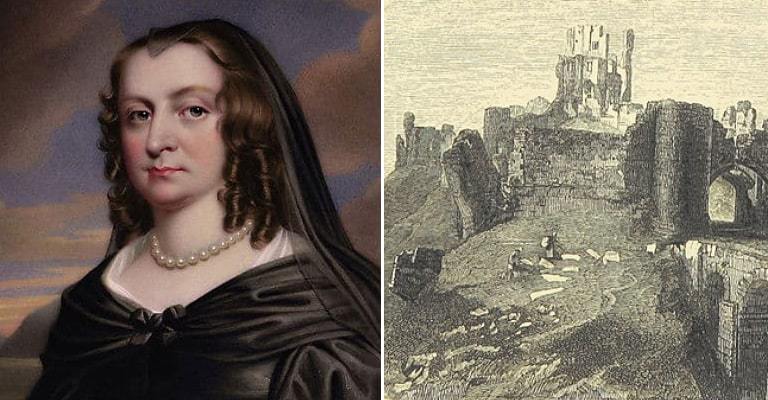In August 1642, the first phase of the English Civil War broke out. The conflict was the result of years of dispute between Crown and Parliment over who should hold the supreme power over the governance of England, Wales and Ireland. The war divided the nation into two camps: those for Parliament, known as Roundheads, who dominated the south east of England and the Royalist cavaliers who initially controlled the north and west.
Very quickly, many Royalist strongholds fell to the Parliamentary forces. However, in Dorset, there was one Royalist castle that hung onto the bitter end. That Castle was Corfe Castle, the home of the Royalist Bankes family. Corfe’s refusal to surrender was attributed to its mistress, Lady Mary Bankes, whose staunch defense of her family home against the odds earned her the title “Brave Dame Mary.” Lady Mary is reputed to defended Corfe to the bitter end. But how much of her story is fact and how much Bankes family legend?

The Bankes of Corfe Castle
Mary Bankes was born around 1598, the daughter of Ralph Hawtry, a Middlesex country gentleman, and his wife, Mary. In 1618, the twenty-year-old Mary Hawtry married John Bankes, an up and coming young lawyer. After his marriage, John Bankes’ career went from strength to strength. In 1624, he became an MP for the first time and in 1530 was elected as one of the prestigious Lent Readers of Grey’s Inns, one of the foremost Inns of Court in London.
On June 5, 1631, Charles I knighted Bankes and appointed him the attorney to the heir to the throne, the young Prince Charles. However, this was not the pinnacle of John Bankes’ career. In 1634, the King appointed Sir John as his Attorney General. John Bankes was now an important man. In 1635, he decided he needed an estate to match his status. So, he purchased Corfe Castle in the Purbeck hills of Dorset, along with .all its associated lands, rights and privileges.

Corfe had been a stronghold since Saxon times. However, after the Norman Conquest, the castle was rebuilt out of local Purbeck stone. A 21-meter high keep was constructed, which left the castle looming over the landscape around it. Corfe Castle became one of the most impressive defensive sites in Britain. Now, it became the home of Sir John, Lady Mary, and their growing family.
However, the Bankes only had a few short years to enjoy their new home. War was looming, as the tensions between King Charles, and his Parliament grew. Finally, on August 22, 1642, the first round of the English Civil Wars broke out. Sir John, who remained loyal to King Charles, journeyed north to York to join the Royalist army. Lady Mary and the children were left behind in the relative safety of Corfe. However, Lady Mary was aware that sooner or later, Corfe would become part of the war.
So, according to the Royalist News book, the Mercurius Rusticus, she sent her sons away and stayed on with her daughters, servants and a garrison of just five men. Parliament’s forces, however, began to advance even sooner than Lady Mary feared. By spring 1643, Corfe Castle was the only royalist stronghold left in Dorset. Then, in May 1643, the worst happened. A Parliamentary force of between two to three hundred men, led by Sir Walter Erle arrived at Corfe and demanded Lady Mary surrender the castle.

